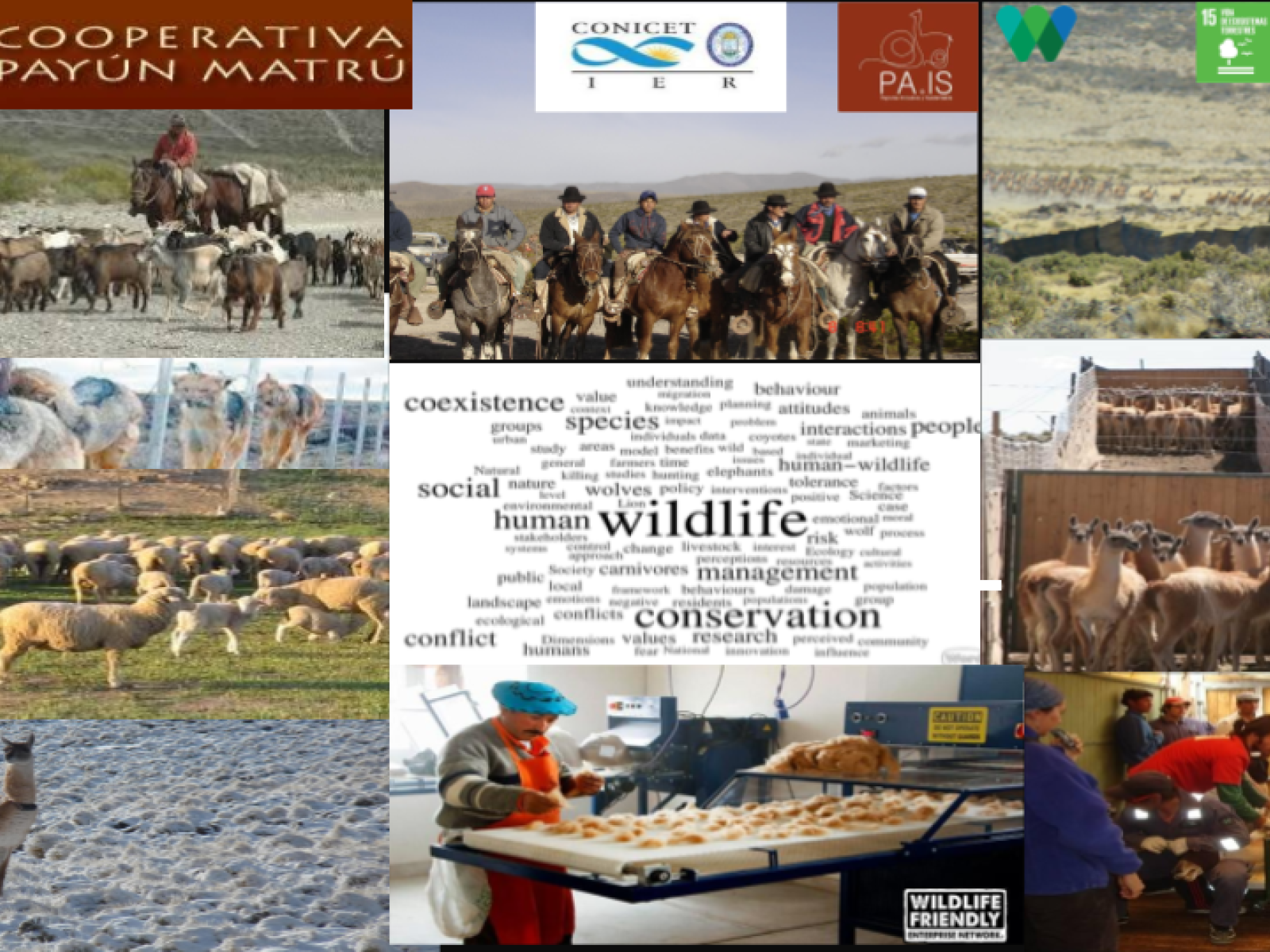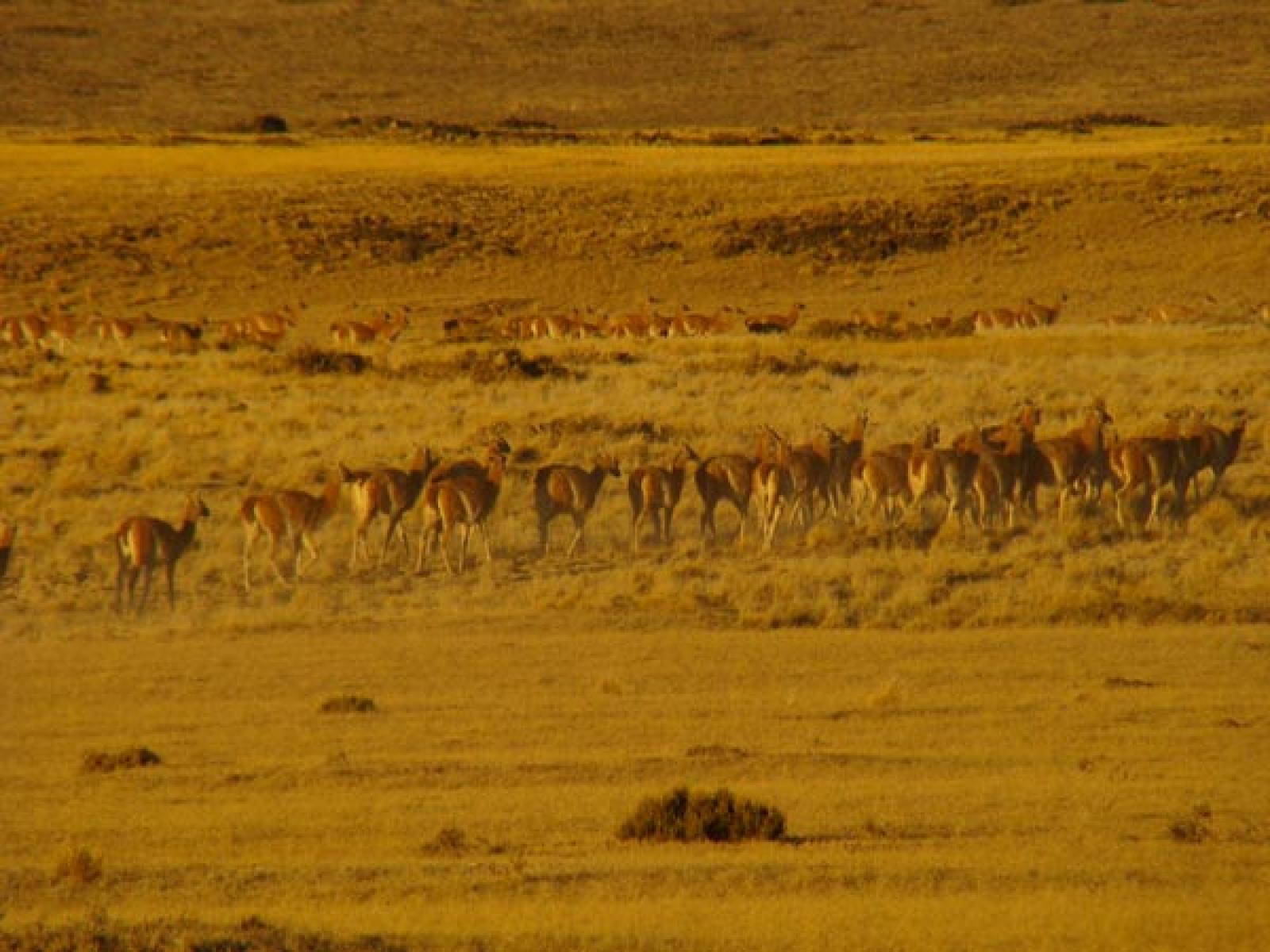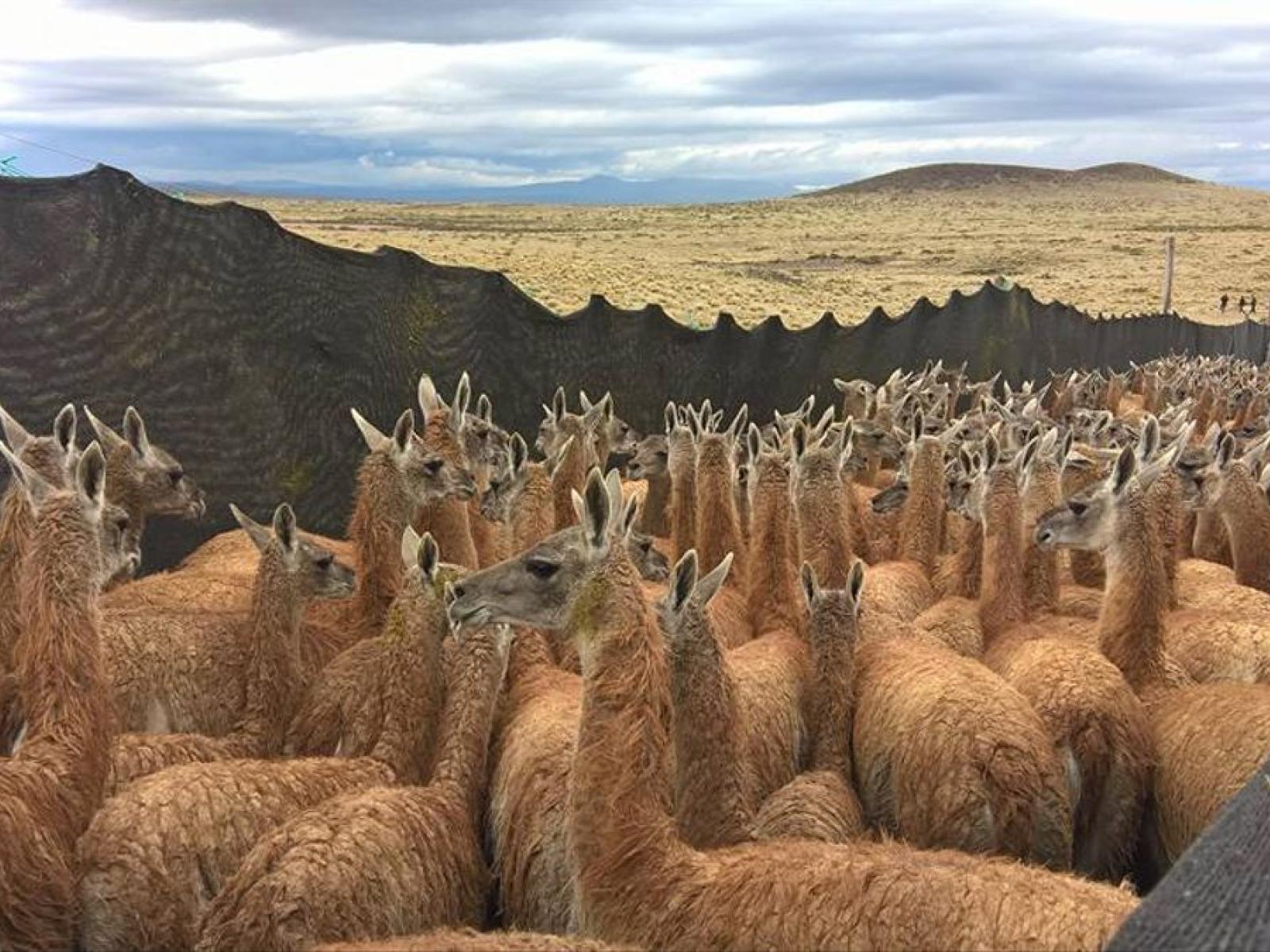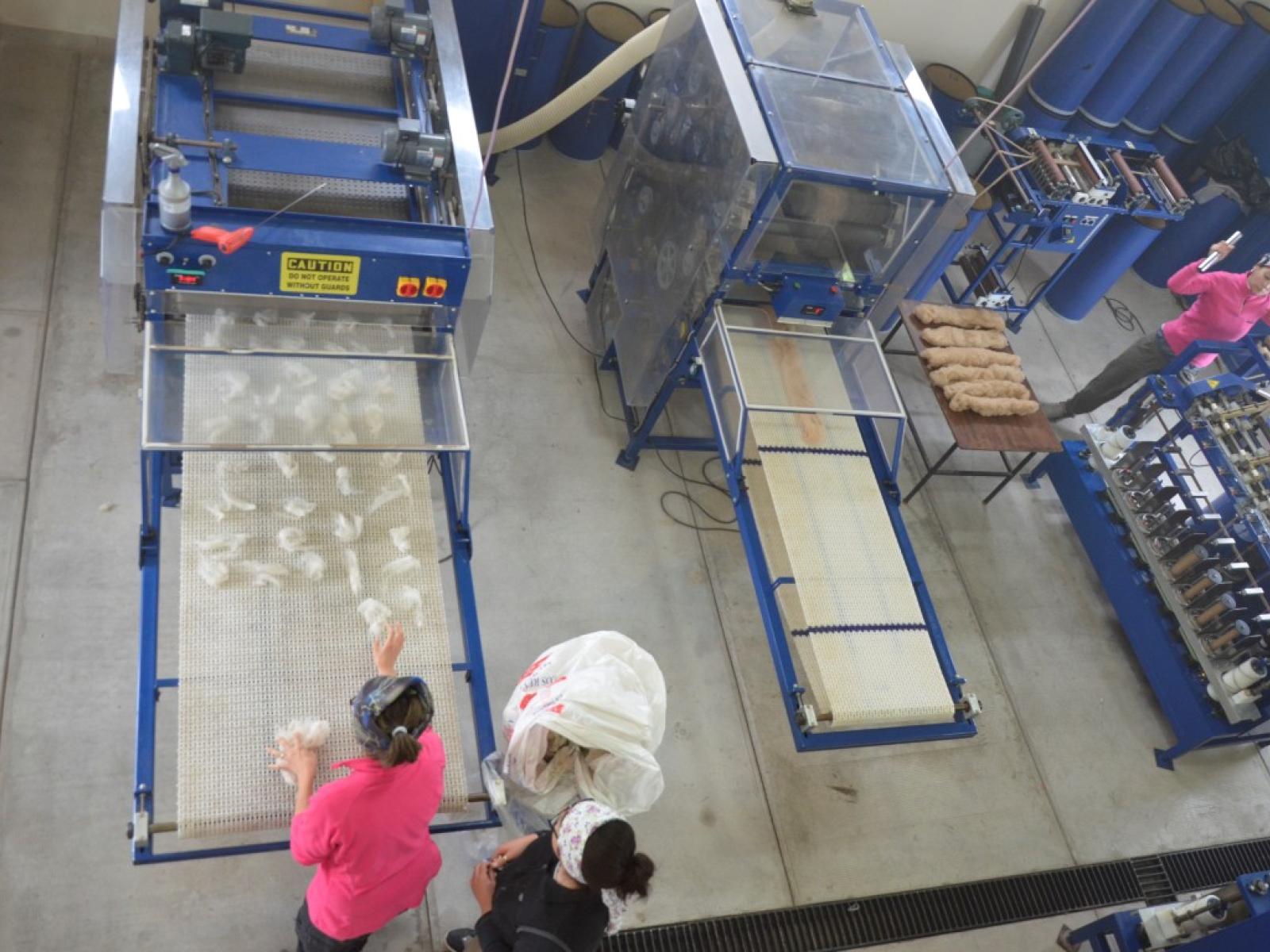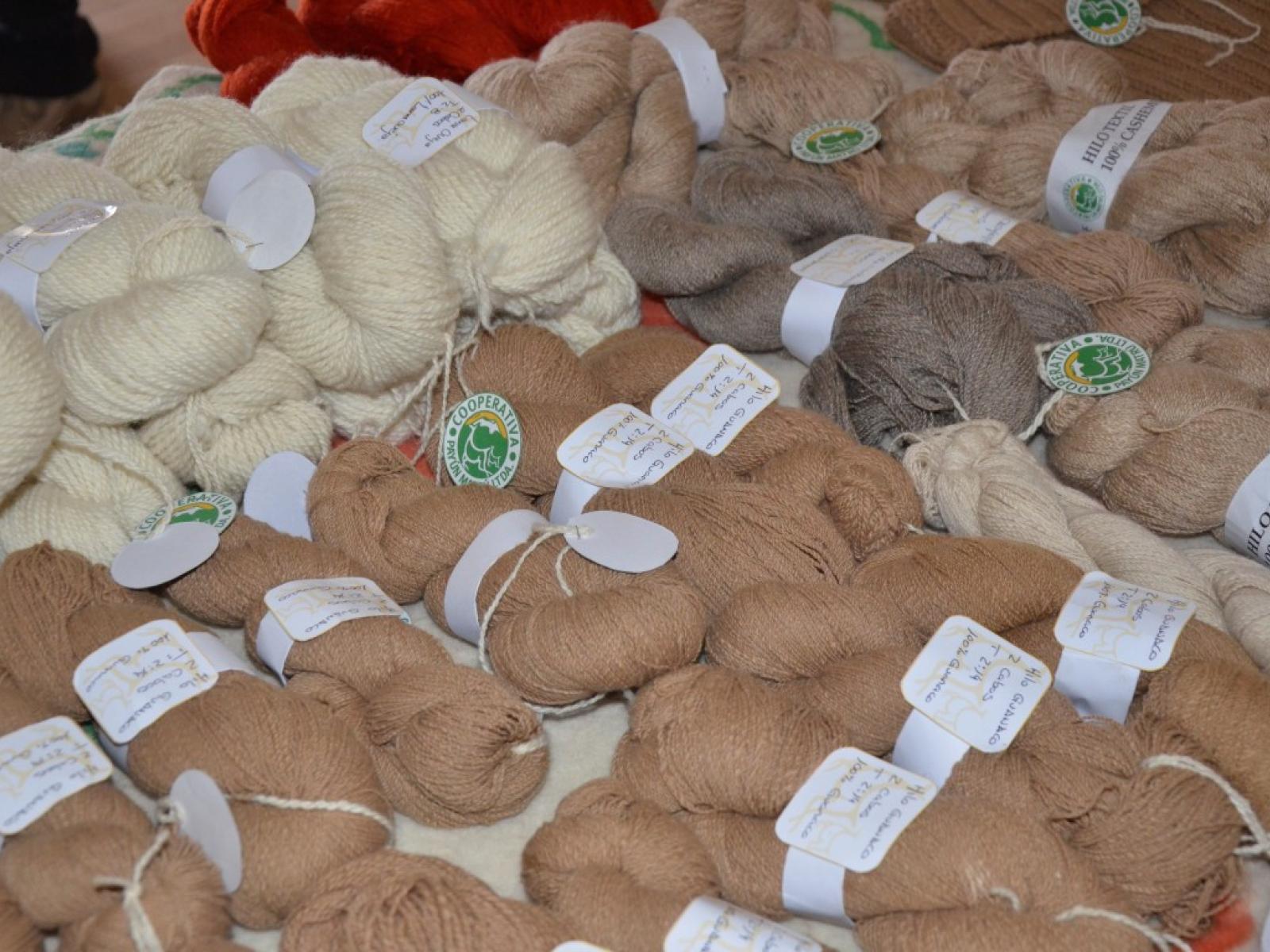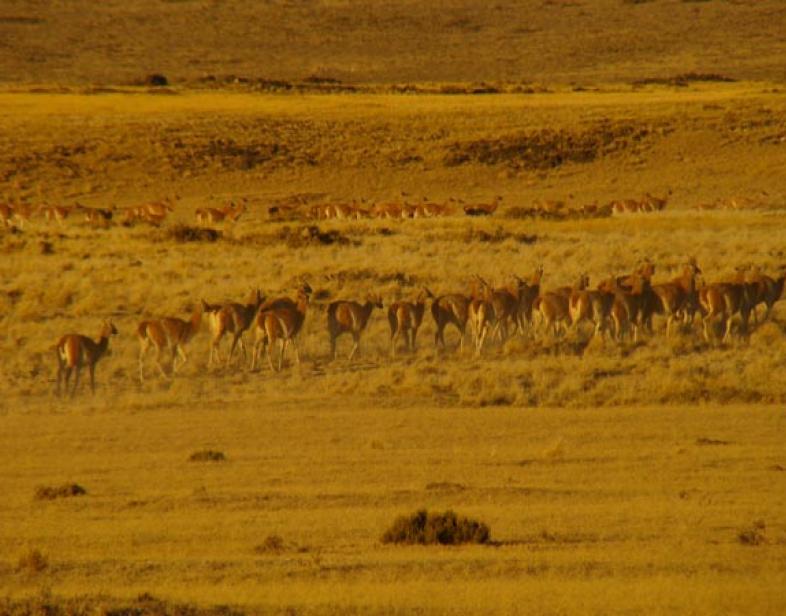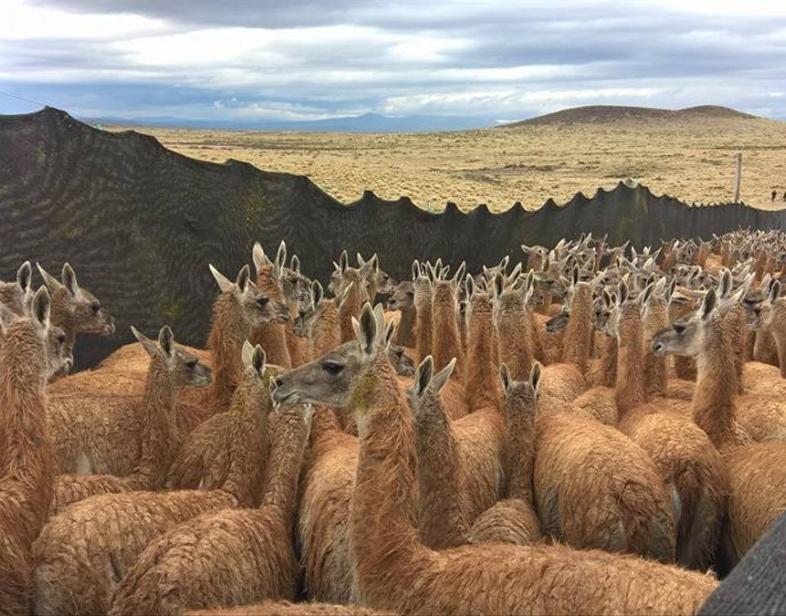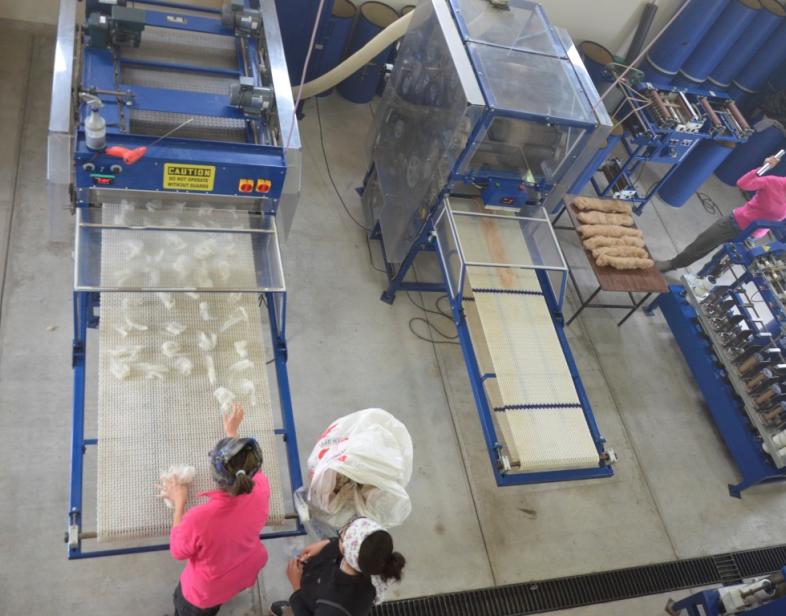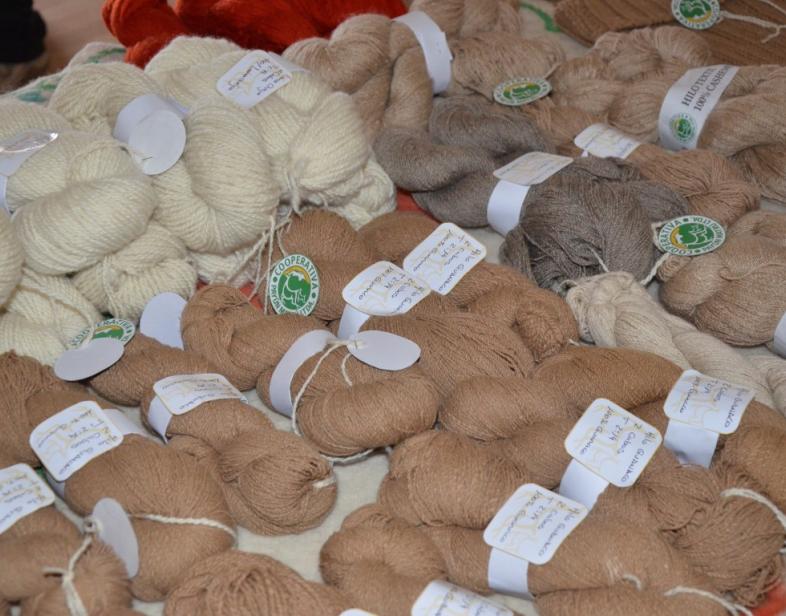An Overview Of Our Solution
Our Wildlife Friendly Actions (WFA) is to highlight and expand the importance of the sustainable use of guanaco fiber due to the potential of this activity to generate local socio-economic development and become an effective conservation tool reducing the impact of the human footprint.So, we propose to1)Promote the sustainable use of wild guanaco populations through demonstrative experiences of live-shearing in La Payunia Reserve; 2) Encourage the generation of a chain that increases the commercial value of the guanaco fiber;3) Generate WFA certifications that increase the market value of the fiber, and 4) Encourage WFA actions through effective communication strategies giving visibility to the sustainable management of wild guanacos. “We believe in the power of consumers to change the Land-use paradigms"
- Population Impacted: 1580 and is increasing year by year
- Continent: South America
背景分析
Wildlife Friendly Patagonian Fiber: Building capacity for sustainability of guanaco use.
One of South America’s most vexing and polarizing challenges is how the “best way” to manage public lands established for multiple uses such as natural resource extraction, wildlife, and recreation. Conflicts between the human dimension and wildlife occur when the interests and objectives of human activities, such as extensive and intensive livestock farming, agriculture, and extractive activities do not take into account the native flora or fauna of the landscape, much less its functional diversity in a perspective of conservation of ecosystem services. In this sense, guanaco’s populations on Andean Patagonian Steppe (of Argentina) were considered by rural settlers as a plague due to the competition for pastures and were historically exterminated. Today only 15% of the original number of guanacos remains, and populations are fragmented. The guanaco population in La Payunia is one of the few existing populations that continue to exhibit annual long-distance migrations. A community self-organized in a cooperative ("Payun Matru") of people living around La Payunia reserve has begun the annual roundup and live shearing of guanacos to collect their valuable wool following strict animal welfare protocols. In contrast, a project recently promoted by some ranchers in southern Patagonia, and supported by some national agencies of productive promotion, proposes legalizing hunting to commercialize guanaco meat and fiber, arguing that this would increase the commercial value of the species and would change the rancher’s vision. However, we have strong arguments to believe that the main objective of this project is to reduce the density of guanacos in the fields in which they share habitat with domestic livestock and free up grazing areas. Several studies have shown that the Patagonian landscape must be analyzed as a cultural construction, cause, and effect of human management.
描述您希望目标受众采用的技术解决方案。
To strengthen and highlight the importance of the sustainable use of guanaco fiber to become an effective conservation tool reducing the impact of the human dimension. This activity has the potential to reduce the process of desertification of arid ecosystems and provide an economical alternative for local producers and increase the profitability of the land. 1) Promote sustainable use of wild guanaco populations through demonstrative experiences of live shearing in La Payunia.2) Encourage the generation of a chain that increases the commercial value of the guanaco fiber.3) Generate wildlife-friendly certifications that increase the market value of the fiber obtained in this way provide training to the appropriate stakeholders to reduce the principal threats to wildlife, habitats, and landscape connectivity.4) Foster Wildlife Friendly Actions (i.e, guanaco use) could bring solutions to the conflict generated between conservation and livestock production paradigm.
描述你的行为干预。
This project was born while I was doing my PhD on stress physiology in camelids, I visited the local herdsmen and between mates we exchanged knowledge, of course, I learned more from them about the behavior of guanacos. That was when we began to exchange our perceptions about the state of the landscape and the breeding of domestic cattle as the main economic activity. They said that they were coming from a season of more than 10 years of drought, that the number of livestock was decreasing, and that the guanacos were a competitor for their livestock and were degrading the environment. It was not easy to change their negative perception of the species, but when we told them that the guanaco evolved with their ancestors in a relationship of coexistence and not conflict, they wondered what that time would have been like. and the Payun Matru cooperative and guanaco shearing or silvestry were born. It was not easy for them to adopt cooperativism as a form of organization since it was something new for their customs, but the key was when they began to see the results of working together, and that shearing guanacos was an important challenge for them, but not impossible. Of course, we freed ourselves from all academic titles or labels to work alongside them, confident that we were on the right path towards Coexistence between human activities and biodiversity and we have a textile plant.
使用的行为杠杆
描述项目的实施。
1)Pre-shearing surveys on population parameters,2)Training of the personnel (without experience) in charge of guanacos handling during herding, within the corrals, and during shearing is key to the success of the activities.3)Management of wild guanacos: Capture, shear, and release of wild guanacos will be carried out in two events, between September and November.4)Physiological indicators: physiological stress in the function of handling conditions.5)Post-shearing surveys on population parameters such as social structure and population density. A community self-organized in a cooperative ("Payun Matru") of people living around La Payunia reserve has been carrying up live shearing of guanacos to collect their valuable wool. We consider that the use of wild camelids would have a fundamental role in reducing the process of desertification of arid ecosystems (landscape-protected area solution), providing an economic alternative (added to the high commercial value of the guanaco fiber in the external market) for local producers (social solution) and increasing the profitability of the land. Our project completed targets in 1)biodiversity conservation, by increasing the abundance and viability to one of the few existing populations that continue to exhibit annual long-distance migrations, recovery their functional role, and change the negative perception by local people for a positive one. 2)Land management, by reducing the process of desertification of arid ecosystem because livestock is poorly managed and stocked at densities beyond the carrying capacity of the range. 3) Social Solution, by building a unique textile center in the region (inside la Payunia), generating local labor, and avoiding the emigration of young people to urban centers. We change conflicts to COEXISTENCE
描述项目的主导者。谁在主导项目实施?
Dr. Ramiro Ovejero: the coordinator project, will oversee the project as a whole. He has a PhD in wildlife biology and 14 years experience in research, management, and conservation of wildlife in arid lands; Dr. Pablo Carmanchahi: the advisor for the capture and shearing operations in La Payunia, and is primarily responsible for training the cooperative in best practices for shearing. Dr. Pablo Gregorio: He will assist in shearing activities, monitoring populations and organizing workshops. Dra. Antonella Panebianco: she will assist in shearing activities, monitoring populations and organizing workshops.Dra. Natalia Schroeder she has experience in the study of the structure, dynamics and conservation of socio-ecological systems, with emphasis on interactions between wildlife and human activities. MED. Vet. Virginia Rago is a wildlife veterinarian: she is primary responsable for animal health during the shearing procedures. Dr. Leonardo Leggieri and Lic. Antonella Marozzi
分享参与解决方案开发和实施的关键合作伙伴。
Our research group has been collaborating and working in a complementary way with the Wildlife Conservation Society since 2005 and together sees an urgent need to build capacity on long-term management decisions. CONICET, with more than 60 years of experience in promoting the generation of knowledge and the development of technologies, by understanding critical issues and providing solutions for the adoption of conservation measures that benefit nature and humanity. Throughout Argentina and beyond (in international cooperation projects), CONICET has accumulated biological knowledge, cultural understanding, and associations to contribute to flora, fauna and landscapes flourishing alongside local communities. The team formed to carry out this project is intensely involved in helping governments and communities establish and manage protected areas and reserves, make them more effective, and integrate them into the complex land-use matrices surrounding them.Cooperative PayunMatrú: was conformed in 2005, by representatives of families living within the La Payunia Reserve and its influence zone. They develop a global market for luxury guanaco fiber and yarn, which would in turn provide long-term employment for the people of La Payunia system and higher income for the population so that livelihoods could be improved. The Cooperative was also aimed at preserving the local culture and encouraging young people in particular to remain in La Payunia area rather than leaving for the nearby cities.Provincial Direction of Renewable Natural Resources (DRNR): This is the Authority in charge of law enforcement in Natural Protected Areas related to wildlife. International NGO’s: The members of our group belong to IUCN’s South American Camelid Specialist Group.The Wildlife Friendly Enterprise Network (WFEN) is a global community dedicated to developing and marketing products that conserve endangered wildlife while contributing to the economic vitality of rural communities.
谁采用了期望的行为,采取的程度如何? 解释一下你如何测量行为变化的。
As livestock husbandry has become less profitable in the last decades, many people are seeking economic alternatives. This has led to the creation of a cooperative (PayúnMatru) of people living around La Payunia reserve, which was created to carry out an annual roundup and live-shearing of guanacos to collect their valuable wool.At the same time, Cooperative members understand that with making "good practices" they receive "good benefits". We have tested and developed methods for minimizing stress of individual guanacos during capture and handling, that reduce negative impacts at the population level. Our knowledge of ecological, physiological and behavioral processes that "constrain" these camelids in La Payunia, based on more than 10 years of study, put us in a unique position for advising and teaching the cooperative and government stakeholders how to minimize impacts of live shearing on this population.
项目是如何影响水污染的?请详细说明并包括相关的测量方法。
We consider that the use of wild camelids would have a fundamental role in reducing the process of desertification of arid ecosystems (landscape-area solution), providing an economic alternative (added to the high commercial value of the guanaco fiber in the external market) for local producers (social solution) and increasing the profitability of the land.As we are working with wildlife, pre-shearing surveys on population parameters help us to select the best area to build the management structure.Training of the personnel is fundamental (and the key for the success of this solution) for the good management of the animals, avoiding guanaco mortalities and operator injuries.Stress approach give us a key physiological indicator to reduce stress in relation to handling time.Post-shearing surveys give us key population parameters such as social structure and population allow us to compared with data before the live-shearing experience and define the impact on social disruption.
您的解决方案如何促进平等(包括种族、性别、民族、社会阶层/收入,或其他)?
In arid Patagonia, more than 95% of the land is privately owned and, for the most part, was converted to sheep farming which led to intolerance of guanaco in these areas, combined with illegal hunting, has decimated populations.In rural Patagonia there are still transhumant herders, who travel along traditional routes with their flocks up to 200 km between winter and summer feeding grounds, accompanied by their families and sometimes even the children’s school teacher.The local herders need an alternative to make a better living off of fewer goats and sheep.The Payún wool is produced by the“Payún Matrú”self-organized cooperative of ranchers, many of whom are from families which have been producing goat wool for between 50-100 years on La Payunia. A textile factory was built in Paraje Las Salinillas where most of the Payún Matrú members live, with the idea of generating local labor and avoiding the emigration of young people to urban centers.
社会和/或社区是如何受益的?
Forming a cooperative for the Salinilla Puesteros was a big challenge for them, but it brought them many benefits that exceeded the objectives of our project. They were hired by the local municipality in various projects associated with improving the quality of life of the rural population. As pioneers in this activity, they were hired by municipalities in other provinces that were interested in shearing guanacos.
可持续发展如何得到促进?
Thanks to this project, La Payunia, La Salinilla, and Malargue were able to increase their tourist offer and promote sustainable tourism. On the other hand, the development of local artisans was promoted. A group of women artisans (spinners and weavers) with a long tradition for the region was maintained.
可持续性:描述你的解决方案的经济可持续性。
In 2013, the public-private consortium (formed by INTI, Malargüe local goverment, PayúnMatrú Cooperative and CONICET), obtained funding through the Social Development Sector Technological Innovation Fund (FITS-DESCAME), to improve the project and build a textil factory applied to the sustainable use of wild guanacos and to the development and implementation of the productive chain of their fiber. WCS, presented our project in early 2021 to an international company called The Good Growth, and we sign a contract, which states two essential points: a) the costs of a well-conducted management operation imply that the base price of guanaco raw fiber should be 200 dollars; b) the purchase of 100 kilos to be produced for October of this year.
投入产出:实施这些活动的成本是多少?与你上面的结果相比,你的结果如何 这投资吗?
The economic investment (e.g. more than $200,000 including the textile plant) for this type of activity is very large and requires a state presence to have a greater response and impact on the community. Of course, the return on these projects can never be thought of purely in economic terms, which is important, but each family of the cooperative takes its share to cover its needs. Now the most important return is the social impact that the project had on the entire community, overcoming deep-rooted cultural barriers in the people, such as the negative perception they had of a species and its environment. We were able to change a conflict into coexistence. “We believe in the power of consumers to change the Land-use paradigms"
如何能将这个解决方案成功推广在其他地方?
This project was replicated in two more provinces (Rio Negro and Neuquen), and this year we added a third one, Chubut. If we were to carry out this project today, the approximate cost would be $100,000, taking into account inflation and the economic situation of our country. Key partners: Cooperativa Payun Matru; Department of Renewable Natural Resources; Wildlife Conservation Society, Instituto de Ecología Regional (IER-CONICET), Wildlife Friendly Enterprise Network (WFEN), United State Fish and Wildlife Service (USFWS)
